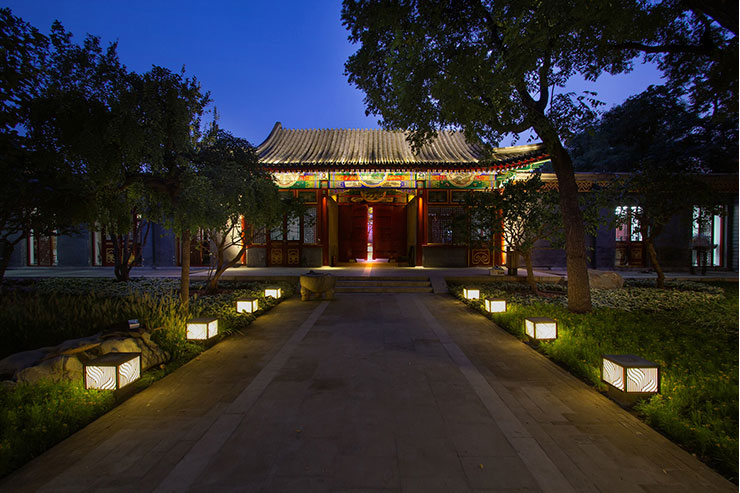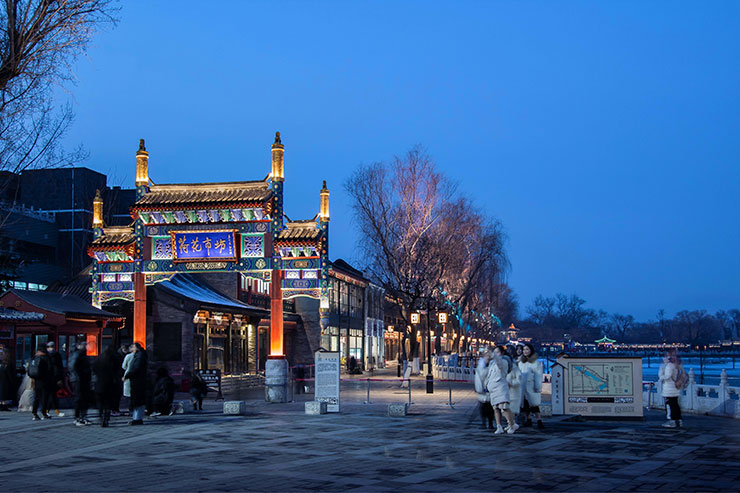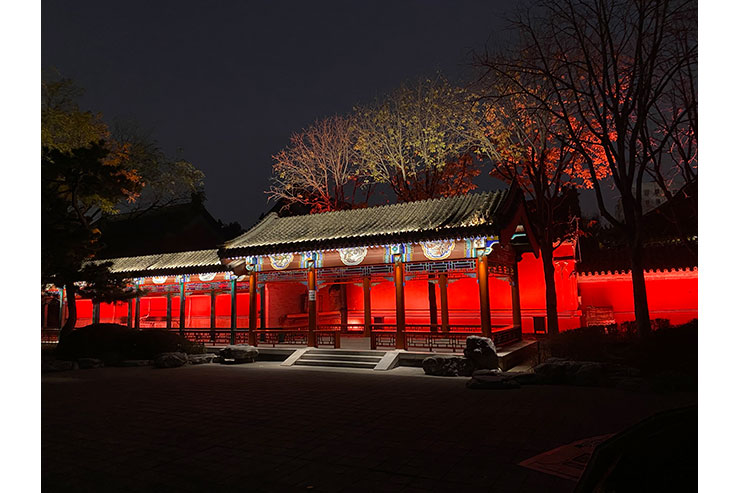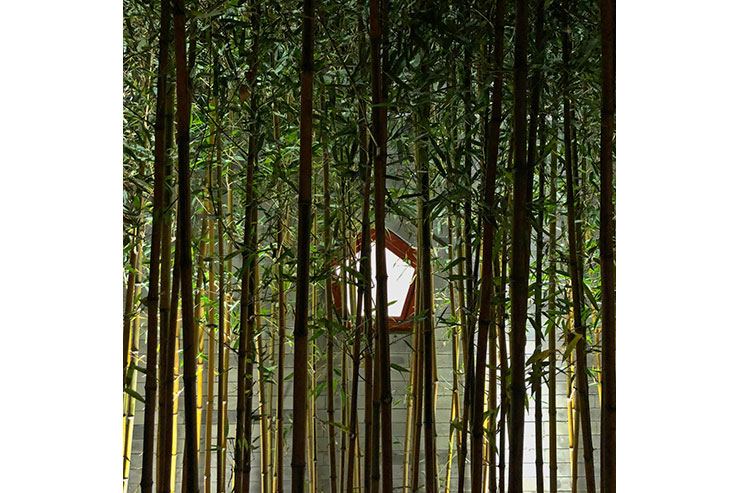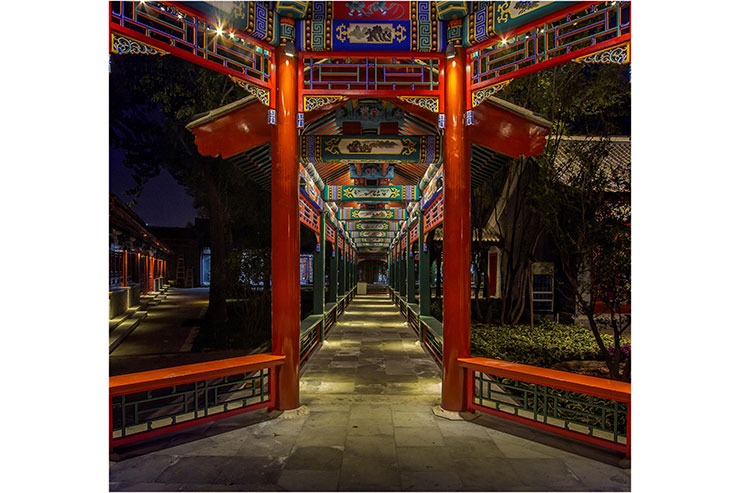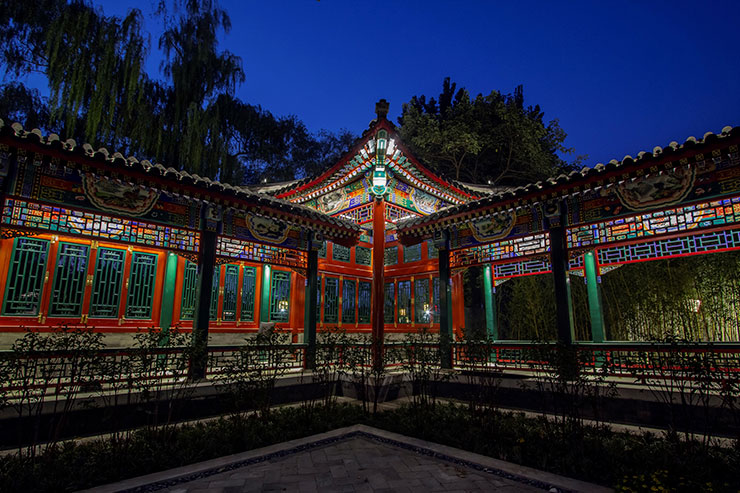This website uses cookies so that we can provide you with the best user experience possible. Cookie information is stored in your browser and performs functions such as recognising you when you return to our website and helping our team to understand which sections of the website you find most interesting and useful.
Beijing Shichahai Historical and Cultural District, China
ProjectBeijing Shichahai Historical and Cultural DistrictLocationBeijing, ChinaLighting DesignBeijing Tsinghua Tongheng Urban Planning and Design Institute, ChinaClientBeijing Xicheng District Urban Planning Management CommitteeLighting SuppliersAoguang Lighting
The 24th Winter Olympics was held in Beijing, in order to display the history, culture and folk customs and experience a rich nightlife in Beijing. Shichahai has upgraded its landscape lighting as it is a famous historical and cultural block in Beijing.
Shichahai is a 600-year-old building complex in Beijing. It used to be the back garden of the royal palace of the Qing Dynasty. Now it is a famous “Beijing Style” cultural center, including 3 water zones and many characteristic buildings with unique Chinese traditional folk style. The design uses Chinese painting techniques such as blank silhouettes and key characterizations and uses night scene lighting to express the old Beijing style of Chinese traditional architecture style. Along the shoreline of the lake, the railings and revetments are not illuminated, but the lights are allowed to shine through the willow trees on the lakeside, and the natural transition between the land and the lake surface allows the building to blend with the surrounding natural environment, rendering an artistic conception of harmonious coexistence with nature.
The project improves the functional lighting of the promenade around the lake to ensure the safety of pedestrians at night. The light poles around the lake use the hollow carving process to fuse the Chinese logo of Shichahai with the traditional hollow carving patterns, making the light poles an artistic decoration on the shore of Shichahai. Installing low-level lighting devices on both sides of the building walkway can illuminate the ground. The surface of the lightbox is carved with flowing lines to make it blend into the scene; the lighting fixtures are arranged in a linear manner, which not only provides guidance for visitors but also creates a visual depth of field with light and shadow with.
The Shichahai architectural complex has the architectural style of royal gardens, with blue-green glazed tiles, vermilion columns, Soviet-style color paintings and carving. During the design process, the glazed tiles and painted wood components of various colors (vermilion, turquoise, indigo, gold, etc.) on the custom-made replica building were used to accurately restore the special color of the ancient building’s facade, after a lot of research and color mixing experiments. Quantitative analysis is also used to determine the special lighting and color rendering requirements of customized lamps.
The lighting design teams paid special attention to the protection of historical buildings. The lamps on the buildings are installed in a non-destructive way such as hoop mounts, jackscrews, and embedded to avoid damage to the buildings; a low-voltage power supply is used to avoid fire risks caused by electric fires. The lights are painted the same color as the installed location so that they can blend into their surroundings without affecting the appearance of the building. The lighting adopts an intelligent control system, which can be set for multiple scenarios, showing different artistic lighting effects in different time periods, and can also save energy through brightness adjustment.
The designers involved in the project are Jing Li, Xunzhi Li, Lei Kuang and Fanglu Ju.

